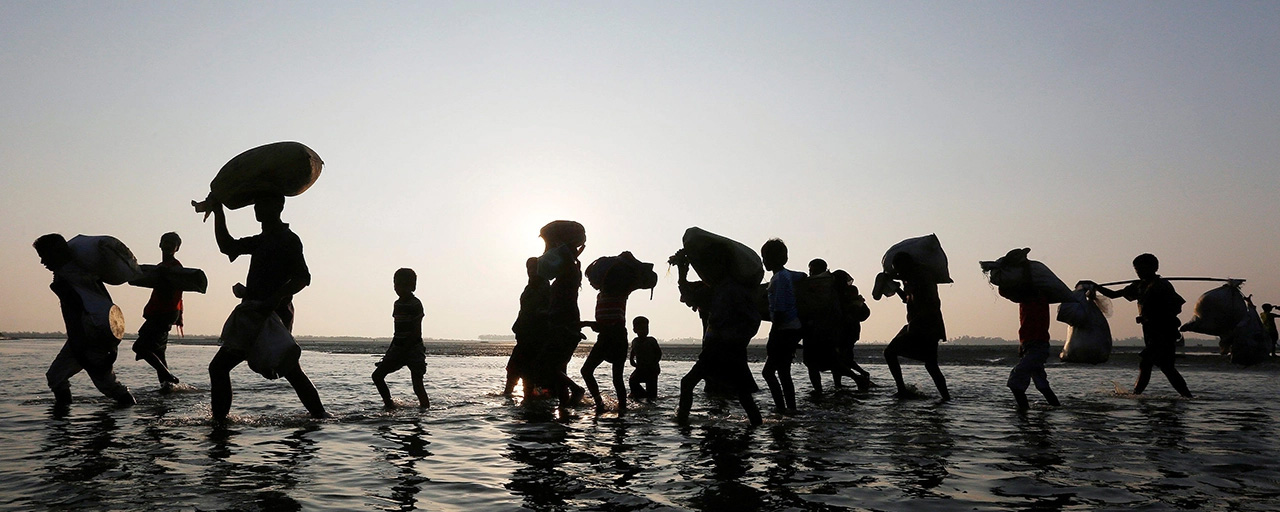Climate Refugees:The Next Global Crisis


In 2020, the Carteret Islands of Papua New Guinea saw an unprecedented event: the official relocation of its inhabitants due to rising sea levels, saltwater intrusion, and unrelenting storms. These islanders became some of the world’s first recognized climate refugees—a term that, despite its increasing relevance, still holds no legal weight under international law. Their experience is not an isolated tragedy; it’s a preview of a looming global crisis. As the climate emergency deepens, so too does the scale and complexity of climate-induced displacement. Yet, the world remains dangerously underprepared.
A Worsening Crisis of Displacement
The numbers are staggering. In 2022 alone, over 32 million people were displaced by weather-related disasters, according to the Internal Displacement Monitoring Centre (IDMC). Climate change is a threat multiplier—it intensifies existing vulnerabilities, from food and water insecurity to weak governance, and pushes people out of their homes due to floods, droughts, hurricanes, and rising seas.
In low-lying island nations like Kiribati, Tuvalu, and the Maldives, rising ocean levels threaten to erase entire countries. In South Asia, unpredictable monsoons and chronic flooding displace millions in Bangladesh. Across sub-Saharan Africa, prolonged droughts are upending the lives of pastoralist communities. Even developed countries aren’t immune—wildfires in California and hurricanes in Florida have triggered large-scale evacuations and long-term displacement.
Despite the global scope of this crisis, there is no coordinated legal or policy framework to protect those displaced by climate change. The systems we rely on were built for a different era, one defined by political conflict rather than environmental collapse.
Statelessness and the Loss of Home
Climate-induced displacement doesn’t just mean the loss of shelter—it can also lead to the loss of national identity. For countries at risk of disappearing entirely, the prospect of statelessness is real. Kiribati’s purchase of land in Fiji as a relocation site, and Tuvalu’s efforts to create a “digital nation” to preserve its legal sovereignty, highlight how unprecedented this issue is.
Without citizenship or legal status, climate migrants face severe exclusion. They are denied access to healthcare, education, and employment in host countries. This creates humanitarian emergencies, erodes development gains, and raises long-term security risks.
A Legal Gap with Real Human Costs
The 1951 Refugee Convention protects individuals fleeing persecution, but it excludes those escaping environmental disasters. Climate refugees fall into a legal grey area—neither fully recognized nor protected. Attempts to update the definition have been slow and politically fraught. Even progressive efforts, like New Zealand’s proposed climate refugee visa, were quietly shelved due to political hesitancy and fear of setting a precedent.
Regional instruments such as the Kampala Convention (Africa) and the Cartagena Declaration (Latin America) offer broader protection but are non-binding and limited in reach. The UNHCR acknowledges climate change as a displacement factor, but its mandate prevents formal inclusion. The International Organization for Migration (IOM) is more flexible but lacks legal authority.
Humanitarian Responses Fall Short
Climate displacement is unique—it often unfolds gradually and intersects with other crises. Yet humanitarian responses are still geared toward sudden-onset, conflict-based displacement. This leaves climate-displaced populations underserved and vulnerable.
Urban areas are increasingly absorbing displaced rural communities. Cities like Dhaka see hundreds of thousands of climate migrants annually, many ending up in slums without basic services. Women and children are especially at risk, facing gender-based violence, malnutrition, and exploitation. In regions like the Sahel, resource-driven migration is also fueling intercommunal conflict.
A Global Policy Vacuum
Despite international frameworks like the Paris Agreement and the Global Compact for Migration referencing climate displacement, their recommendations are vague and unenforceable. The lack of political will—particularly from high-emission nations—has resulted in weak, fragmented policies.
This policy void disproportionately affects the Global South, which bears the brunt of climate impacts while contributing the least to the crisis. Meanwhile, projections suggest that by 2050, more than 216 million people could be internally displaced by climate change in Africa, South Asia, and Latin America alone.
Toward a New Paradigm
The world urgently needs a unified, rights-based approach to climate displacement built on three pillars:
Legal Recognition: International law must evolve to protect climate refugees, whether by amending existing conventions or drafting a new treaty
Humanitarian Adaptation: Aid agencies must tailor their responses to the specific needs of climate-displaced populations, with a focus on long-term integration.
Global Cooperation: High-emission countries must not only reduce emissions but also finance relocation and adaptation in vulnerable regions.
Conclusion
Climate refugees are not a future problem—they are a present reality. Whether it’s the villagers of the Carteret Islands, drought-stricken communities in the Sahel, or families in Louisiana fleeing rising seas, their stories demand global attention and action. Migration, if managed ethically and strategically, can become a form of resilience. But it requires vision, compassion, and above all, justice.
Divya Panchal approaches her work at Cult Current with curiosity.